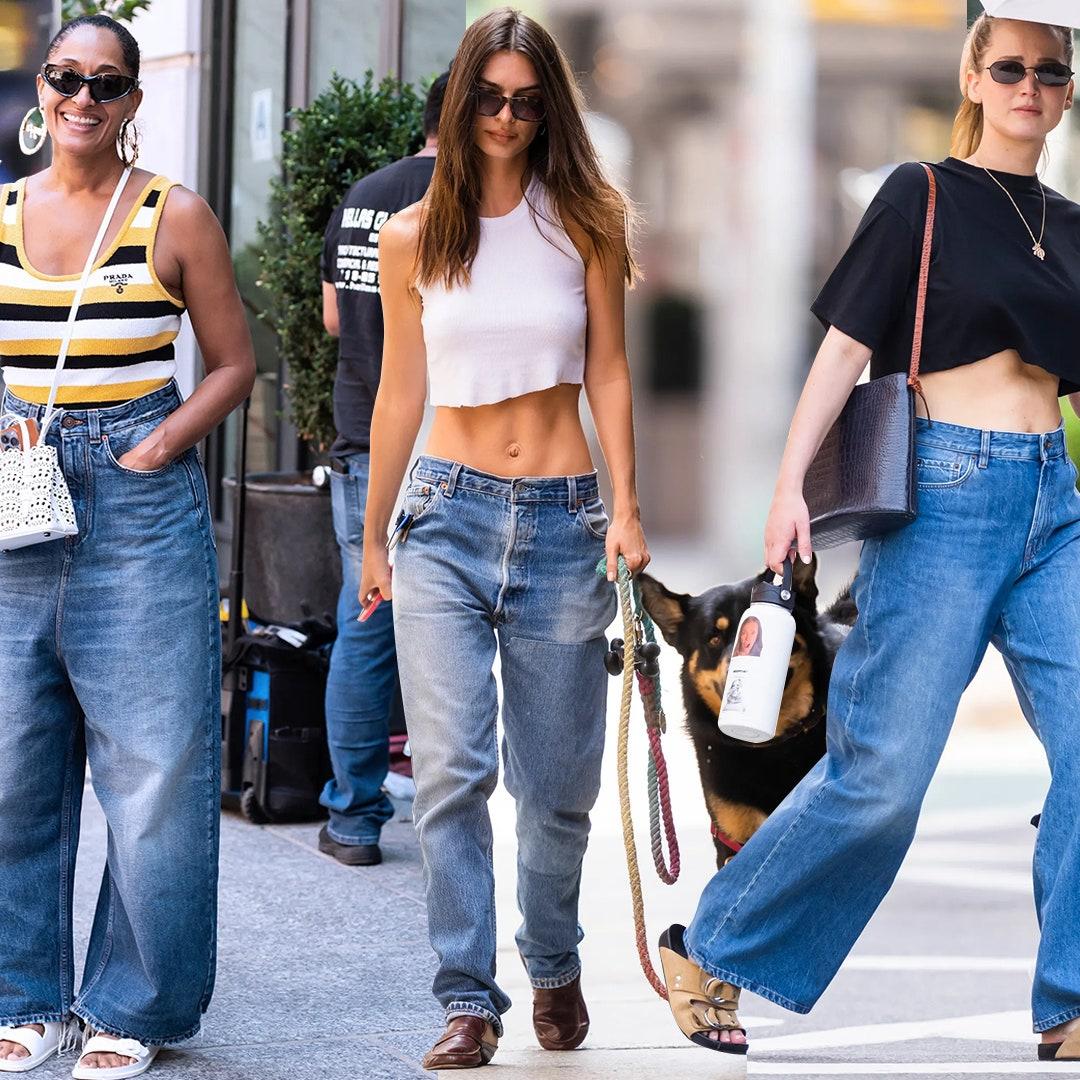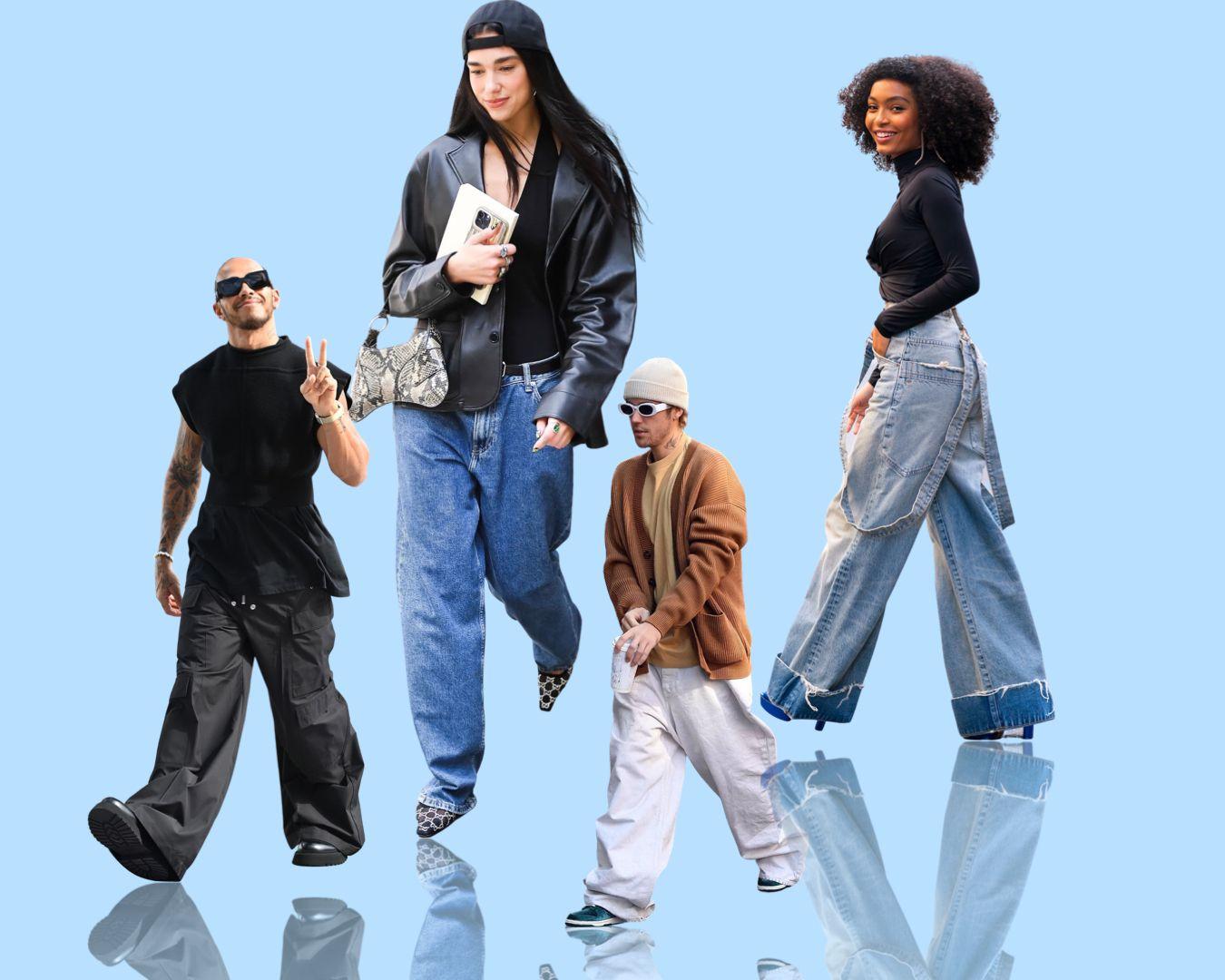
Written by: Mahmoud Demerdash
Date: 2023-09-27
The ongoing rivalry between skinny and baggy pants has emerged as a focal point

Fashion operates in a perpetual cycle, a mesmerizing reel of trends that resurface with each passing decade, echoing our ever-evolving preferences. Amid this rhythmic dance, the ongoing rivalry between skinny and baggy pants has emerged as a focal point, captivating fashion aficionados around the globe. As the sun sets on the era of skinny jeans and the dawn of baggy pants rises, it's a moment ripe for delving into the profound significance of this transition.
The height of skinny jeans' reign arrived in the mid-2000s, characterized by denim that embraced the contours of the body, hugging snugly from waist to ankle. This tailored, sleek aesthetic stood in stark contrast to the tradition of excess fabric. This shift in preference was orchestrated by the harmonious melodies of indie and rock music, the irresistible allure of celebrity fashion, and an audacious desire for modernity that veered sharply from the norms of the past. The era of skinny jeans remains a memorable chapter in the annals of fashion, characterized by the sweeping popularity of slender-fitting clothes. This trend profoundly influenced how people adorned themselves and provided a canvas for communicating their identities during a time looking to define the “2000s” properly. This fusion was propelled by the resonance of indie rock, emo, and punk music scenes, with musicians and bands donning close-fitting attire that harmonized seamlessly with the essence of their subcultures.

Within media, music videos emerged as potent conduits for propagating fashion's influence. Artists wove a kaleidoscope of styles, with skinny jeans finding synergy alongside graphic tees, band paraphernalia, and studded belts—a visual language that spoke volumes of unique self-expression. The likes of Pete Wentz, frontman of Fall Out Boy, and the enigmatic personas behind bands like My Chemical Romance and Panic! at the Disco metamorphosed into fashion beacons. This coincided with the Disney era of the time, where Disney sitcoms reigned supreme, giving young stars their debut as actors and musicians, all of them donning skinny jeans as part of their daily ensemble. Their influence extended beyond entertainment, weaving into the fabric of contemporary style. This audacious departure from convention resonated deeply with the youth eager to unfurl a banner of defiance against tradition. Capitalizing on the hype surrounding skinny jeans, brands swiftly translated this trend into mass production, making these stylish garments readily accessible to a global audience. Before the era of online shopping, brands like American Eagle, H&M, and Forever 21 boasted attractive in-store experiences that attracted shoppers. They extensively promoted the trend of slim-fitting pants and were at the forefront of this movement. In skinny jeans, individuals found an aesthetic outlet to showcase their form in contrast to earlier generations. The allure of the style truly lies in its audacious uniqueness, a stark contrast to prevailing sartorial norms, thus demanding attention and providing an early identity to the new era.
Yet, as the grip of form-fitting skinny jeans loosened on the throne, a relentless revival of baggy pants took center stage in the aftermath of the pandemic. This transformation, akin to a sartorial renaissance, ushered in an era where comfort, nostalgia, and individual expression intermingled to reignite the very essence of fashion. The transition from skinny to baggy pants is more than just a shift in fit; it reflects evolving values and the dynamic nature of fashion. Baggier pants have risen in response to the extended dominance of skinny jeans, which simply become tedious with anything that lasts long enough in the cycle. It’s easy to determine that baggier pants offer a counterpoint that emphasizes ease and movement without compromising style. In an increasingly multifaceted world, where lives encompass diverse activities and settings, the desire for garments that gracefully adapt has fueled the longing for relaxed fits that harmonize with modern life. With retailers experimenting with different fabrics in the market prior to the pandemic and our desire for individuality increasing further, it set the stage for this change.

It would be a disservice not to note the nostalgia revival baggier pants evoke. The echoes of the 1990s resound loudly, a decade fondly remembered for the embrace of loose-fitting jeans and shirts. As baggy jeans resurface, they evoke cherished memories among older generations and cast a spell on newer ones, breathing new life into an aesthetic that spans time while bridging the generational gap as fashion trends continue to transcend age barriers. Embracing baggier pants is akin to wielding a blank canvas for personal style and creative expression. They offer a realm of possibilities, allowing individuals attempting to stand out amidst the crowd and match newer shirt trends that skinnier jeans just wouldn’t mesh with. The evolving silhouette of baggy pants, noted by James Curleigh, the CEO of Levi’s, as potentially heralding a new denim cycle, holds promise for the fashion industry's revitalization after a period of turmoil. Another factor in the rise of baggy pants is the lull in the clothing industry during the pandemic. Many outlets that saw their rise during the skinny jeans era saw a diminishment in their sales as stores were closed. People weren’t spending as much on clothing as they used to; thus, when everything opened up once more, a change was required to entice the market again. The pandemic also saw more people turn to online shopping for their cravings, and with it, increased the sales of many small, unique brands. This has enabled people to buy less standardized clothing from one another as these brands look to create different aesthetics for their merchandise in comparison to larger chains.
In a world of shifting trends, the interplay between skinny and baggy pants speaks volumes about the dynamic spirit of fashion. It captures the perpetual quest for fresh aesthetics, constantly molding itself to resonate with the ever-evolving zeitgeist while reflecting the collective yearnings of humans and their interests. The change between these styles mirrors society's evolving values, cultural dynamics, and the changing ways in which we express ourselves through clothing. As we witness the ebb and flow of trends, from the slim contours of skinny jeans to the liberating expansiveness of baggy styles, we glimpse a reflection of ourselves in the ever-transforming tapestry of fashion.





